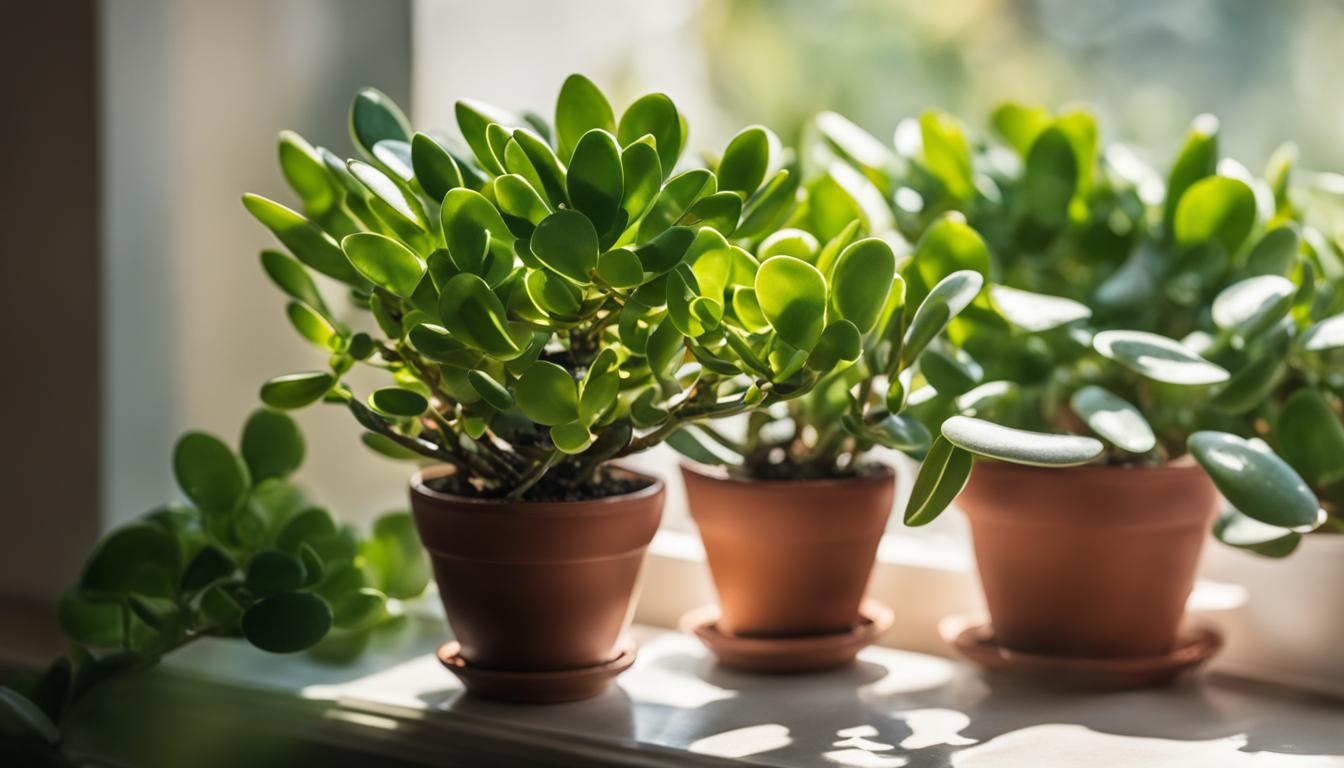
Hey there, fellow plant lovers! Today, I want to share with you my go-to guide for jade plant care. These lustrous green beauties, scientifically known as Crassula ovata, are not only stunning but can also live for up to 100 years if given the right care.
Jade plants are low-maintenance and thrive in bright indirect sunlight, well-draining soil, and occasional watering. But there are a few things you should keep in mind to ensure their health and longevity. Let’s dive right in!
Key Takeaways:
- Jade plants are popular succulents cherished for their lustrous green leaves and long lifespan.
- They require bright indirect sunlight, well-draining soil, and occasional watering.
- Avoid overwatering and extremely cold temperatures as they can be detrimental to the plant’s health.
- Jade plants are toxic to pets and can cause skin irritation in humans.
- With proper care and maintenance, jade plants can bring good luck and prosperity to your space.
Jade Plant Varieties and Characteristics
Jade plants belong to the Crassula genus and are characterized by their thick, fleshy leaves and woody stems. They are native to Africa and are popular as houseplants for their attractive appearance and easy care.
The most common jade plant variety is Crassula ovata, also known as the money plant, which features oval-shaped, glossy green leaves. Other notable varieties include Crassula argentea, with its silver-green foliage, Crassula portulacea, known for its tubular leaves, and Crassula atropurpurea arborescens, which displays deep purple stems and leaves.
Jade plants have a unique growth habit, with a tree-like appearance as they mature. They can grow up to 10 feet in height and have a bushy, branching structure. The foliage of jade plants is typically blue-green or dark green, providing a striking contrast against the pale stems.
During the spring and winter months, jade plants may produce clusters of small pink or white flowers. These flowers are delicate and add a touch of beauty to the plant’s overall appearance.
Jade Plant Varieties and Characteristics
| Variety | Characteristics |
|---|---|
| Crassula ovata (Money Plant) | Oval-shaped, glossy green leaves |
| Crassula argentea | Silver-green foliage |
| Crassula portulacea | Tubular leaves |
| Crassula atropurpurea arborescens | Deep purple stems and leaves |
Cultivating different varieties of jade plants can add variety and visual interest to your indoor or outdoor garden. Whether you prefer the classic green leaves of Crassula ovata or the unique colorations of other varieties, jade plants are sure to bring beauty and charm to your space.
Jade Plant Light Requirements and Sunlight Tips
Proper lighting is crucial for the health and growth of jade plants. These succulent houseplants thrive in bright, indirect sunlight. Placing them in a south-facing or west-facing window that receives at least 4 to 6 hours of sunlight per day is ideal. However, it’s important to avoid exposing the plants to direct sunlight, especially during the hottest parts of the day.
Direct sunlight can cause the leaves of jade plants to shrivel and burn, especially for young plants. To prevent this, you can use sheer curtains or blinds to filter the intense sunlight. If you don’t have a suitable window, you can also use fluorescent grow lights to provide the necessary light for your jade plant.
Lighting Tips for Jade Plants
- Place your jade plant near a window with bright, indirect sunlight.
- Avoid exposing the plant to direct sunlight to prevent leaf damage.
- Use sheer curtains or blinds to filter the intense sunlight if needed.
- Consider using fluorescent grow lights as an alternative light source.
- During the summer months, you can take your jade plant outside to provide it with additional sunlight.
“Proper lighting is crucial for the health and growth of jade plants.”
By providing your jade plant with the right amount and quality of light, you can ensure that it thrives and maintains its vibrant green color. Remember to regularly monitor your plant and adjust its lighting conditions if needed to keep it happy and healthy.
Proper Watering Techniques for Jade Plants
One of the most crucial aspects of jade plant care is watering. Getting the watering routine right is essential for the plant’s health and longevity. Overwatering can lead to root rot, while underwatering can cause the plant to suffer. So, how often should you water your jade plant?
As a general rule, jade plants should be watered when the soil is almost dry to the touch. Allow the top inch of soil to dry out between waterings, but do not let the soil become completely dry. It’s important to strike a balance and avoid extremes.
It’s worth noting that the frequency of watering depends on various factors, such as the plant’s size, pot size, and environmental conditions. During the hot summer months, the plant may require more frequent watering, while in the cooler winter months, less frequent watering may be needed.
To determine if your jade plant needs watering, simply stick your finger into the soil up to the second knuckle. If the soil feels dry at that depth, it’s time to water. However, if the soil feels moist, it’s best to wait a bit longer before watering again.
Proper Watering Techniques for Jade Plants
| Signs of Overwatering | Signs of Underwatering |
|---|---|
| – Yellowing or wilting leaves | – Shriveling, wrinkling leaves |
| – Root rot | – Leaf drop |
| – Mushy or soft stems | – Slow growth |
Proper watering techniques play a vital role in keeping your jade plant healthy. By carefully monitoring the soil moisture and adjusting your watering routine accordingly, you can ensure that your jade plant thrives and continues to bring beauty and good luck to your space.
The Right Soil for Jade Plants
When it comes to jade plant care, choosing the right soil is crucial for the plant’s health and growth. Jade plants prefer well-draining soil that replicates their natural habitat.
A mix of potting soil, sand, and perlite or pumice is ideal for growing jade plants in containers. This combination allows for proper drainage, preventing the roots from becoming waterlogged and susceptible to rot.
Avoid using soil that retains moisture, such as heavy garden soil or peat-based mixes, as they can lead to root rot and other issues. It’s also important to note that jade plants prefer slightly acidic soil with a pH range of 6.0 to 7.0. You can adjust the pH level by adding organic matter or using a soil pH test kit available at most gardening stores.
To provide your jade plant with the best possible growing conditions, consider using an unglazed clay pot. Unglazed clay pots allow excess moisture to evaporate from the roots, preventing waterlogging. Additionally, they provide stability for the top-heavy growth commonly seen in mature jade plants.

Here’s a summary of the key points to remember when it comes to choosing the right soil for jade plants:
- Use a well-draining soil mix of potting soil, sand, and perlite or pumice.
- Avoid soil that retains moisture, as it can lead to root rot.
- Ensure the soil has a slightly acidic pH level of 6.0 to 7.0.
- Consider using an unglazed clay pot for better moisture evaporation and stability.
With the right soil and proper care, your jade plant will thrive and bring beauty to your home or garden for years to come.
Temperature and Humidity Requirements for Jade Plants
Proper temperature and humidity levels are crucial for the health and well-being of jade plants. These factors play a significant role in the plant’s growth, development, and overall vitality. It’s important to understand the ideal temperature range and humidity conditions to ensure your jade plant thrives.
Temperature:
Jade plants thrive in average household temperatures ranging from 65°F to 75°F (18°C to 24°C). It’s essential to avoid exposing them to extreme temperature fluctuations, as this can cause stress and negatively affect their growth.
Keep your jade plant away from drafty areas, such as open windows or doors, and avoid placing them near HVAC ducts. If the temperature drops below 50°F (10°C), it can significantly impact the plant’s health, so be mindful of its placement in your home or garden.
Humidity:
Jade plants are known for their ability to tolerate low humidity levels, making them suitable for indoor environments with normal humidity conditions. They can adapt well to the average humidity levels found in most homes.
It’s essential to avoid excessively dry conditions, as this can lead to leaf drop and affect the overall appearance of the plant. If you live in an area with extremely arid conditions, you may consider using a humidifier or misting the plant occasionally to provide some additional moisture.
Remember that while jade plants are tolerant of low humidity levels, they still require regular watering to maintain their health. The humidity levels discussed here refer to the overall air moisture and not the plant’s specific water requirements.
| Temperature | Humidity |
|---|---|
| 65°F to 75°F (18°C to 24°C) | Tolerant of normal indoor humidity levels |
| Avoid temperatures below 50°F (10°C) | Avoid excessively dry conditions |
| Avoid exposure to extreme temperature fluctuations | Misting or using a humidifier in extremely arid conditions |
Maintaining the appropriate temperature and humidity levels for your jade plant is key to its success. Providing a stable temperature range within the suitable limits and ensuring the humidity levels are within the plant’s tolerance will help promote optimal growth and overall well-being.
Fertilizing and Pruning Jade Plants
Fertilizing and pruning are important aspects of jade plant care that can help promote healthy growth and maintain the plant’s appearance. Although jade plants are low-maintenance, they benefit from occasional fertilization and selective pruning to keep them thriving.
Fertilizing Jade Plants
Jade plants do not require frequent fertilization, but applying an all-purpose organic fertilizer can help provide essential nutrients. It’s best to fertilize jade plants in early to mid-spring when they are actively growing.
Use a balanced fertilizer with equal parts nitrogen, phosphorus, and potassium to promote overall plant health. Follow the instructions on the fertilizer package for the appropriate dosage, taking care not to over-fertilize as this can lead to salt accumulation and burn the plant’s roots.
During the growing season, you can also give your jade plant an occasional low dose of fertilizer to maintain its vibrant green color. Dilute the fertilizer to half-strength and apply it every 2 to 4 weeks. In general, it’s better to under-fertilize jade plants than to over-fertilize them. Monitor your plant’s growth and adjust the fertilization frequency accordingly.
Pruning Jade Plants
Pruning is optional for jade plants, but it can be done to control their size and shape, as well as to remove any damaged or diseased parts. Pruning can also help maintain the plant’s balanced appearance if it becomes top-heavy. Use clean, sharp pruning shears or scissors to make clean cuts and minimize the risk of infection.
“Pruning can be an opportunity to propagate new jade plants as well. Simply take stem cuttings and root them in well-draining soil to grow new plants.”
When pruning, consider the natural growth pattern of the jade plant and aim to maintain its overall shape. Start by removing any dead, yellowed, or damaged leaves. If the plant has become leggy or has uneven growth, you can prune the stems to encourage bushier growth. Make the cuts just above the leaf nodes to promote branching.
After pruning, allow the jade plant to recover for a few weeks before resuming regular care. Provide optimal lighting, watering, and temperature conditions to support the plant’s growth and prevent stress.

- Fertilizing jade plants with an all-purpose organic fertilizer in early to mid-spring can provide essential nutrients.
- Occasional low doses of fertilizer during the growing season can help maintain the plant’s green color.
- Pruning jade plants is optional but can be done to control size, shape, and remove damaged parts.
- Pruning can also be an opportunity for propagation by taking stem cuttings and rooting them in well-draining soil.
- Allow the plant to recover after pruning and provide optimal care for continued growth and health.
Repotting and Transplanting Jade Plants
Repotting and transplanting are essential aspects of jade plant care that help maintain the health and vitality of these beautiful succulents. Repotting should be done every 2 to 3 years to prevent the plant from becoming root-bound and to provide fresh soil for optimal growth.
Transplanting, on the other hand, involves moving the jade plant to a new location altogether. Both processes require a delicate touch and the right timing to ensure success.
Before repotting a jade plant, it’s important to choose the right pot. An unglazed clay pot with good drainage is ideal, as it allows excess moisture to evaporate from the roots. Select a pot that is wider and heavier at the bottom to provide stability for the top-heavy growth of the jade plant.
When it’s time to repot, gently remove the plant from its current pot, being careful not to damage the roots. Clean the roots by removing any old, dead, or rotting parts. Place the plant in fresh, well-draining soil, and lightly pack the soil around the roots.
Transplanting a jade plant should be done with caution. It’s best to allow the plant to establish itself in its current pot before considering transplantation. If you decide to transplant, choose a location that provides similar growing conditions to the plant’s current environment.
Dig a hole slightly larger than the root ball and carefully remove the plant from its old pot. Place the plant in the new hole, making sure it is level with the surrounding soil. Backfill the hole with soil, firming it gently around the roots to eliminate air pockets.
It’s important to note that both repotting and transplanting can cause stress to the jade plant. To minimize stress, avoid repotting or transplanting during the plant’s active growth period, which is typically spring or early summer.
Instead, choose a time when the plant is in a semi-dormant state, such as late winter or early fall. After repotting or transplanting, monitor the plant closely for signs of stress, such as wilting or leaf drop. Provide the plant with appropriate care, including proper watering and light conditions, to help it recover and thrive in its new pot or location.
Signs that indicate it’s time to repot or transplant your jade plant
| Signs that it’s time to repot | Signs that it’s time to transplant |
|---|---|
|
|
| Tip: Repot in spring or early fall for best results | Tip: Transplant during the plant’s semi-dormant state |
Jade Plant Pests and Diseases
Jade plants are generally resilient and can withstand various environmental conditions. However, they are still susceptible to certain pests and diseases. It’s crucial to be aware of these potential issues to ensure the health and vitality of your jade plant.
Pests
Common pests that can affect jade plants include mealybugs, aphids, scale insects, and spider mites. These tiny creatures can infest the plant, sucking its sap and causing damage.
Regularly inspect your jade plant, paying close attention to the undersides of leaves where pests tend to hide. If you notice signs of infestation, such as visible bugs, sticky residue, or yellowing leaves, take action immediately.
To get rid of pests, you can try various methods such as wiping the affected areas with a cotton swab dipped in rubbing alcohol or using an organic insecticidal soap. It’s essential to treat the infestation promptly to prevent further spread and damage.
Diseases
Jade plants can also be susceptible to diseases, particularly if they are overwatered or exposed to extreme temperature fluctuations. One common disease is root rot, which occurs when the roots are constantly wet and unable to dry out.
Signs of root rot include yellowing leaves, wilting, and a foul odor from the soil. If you suspect root rot, it’s crucial to take immediate action by adjusting your watering habits and ensuring the plant is in well-draining soil.
Another issue that can affect jade plants is leaf spotting. This is often caused by fungal or bacterial infections, which can occur if the leaves are consistently wet or if the plant is in a humid environment.
To prevent leaf spotting, avoid getting water on the leaves when watering, and ensure there is good air circulation around the plant.
By being vigilant and taking proactive measures to address pests and diseases, you can keep your jade plant thriving and enjoying its lush green foliage for years to come.

Propagating Jade Plants
Jade plants are relatively easy to propagate and can be multiplied through stem cuttings or leaf cuttings. Propagating jade plants is a fun and rewarding way to expand your collection or share these beautiful plants with friends and family. Let’s explore the two methods of propagation in detail:
Stem Cuttings
To propagate jade plants using stem cuttings, follow these steps:
- Using a clean and sharp knife or pruning shears, cut a healthy stem from the mother plant. Make sure the cutting is about 3-4 inches long and has at least a few sets of leaves.
- Allow the cutting to dry and callus over for a few days. This helps prevent rotting once the cutting is planted.
- Prepare a well-draining potting mix by combining equal parts of perlite and coarse sand.
- Insert the bottom end of the cutting into the potting mix, burying it about an inch deep.
- Water the cutting lightly and place it in a bright, indirect light location.
- Maintain slight moisture in the soil by misting it regularly, but avoid overwatering.
- After a few weeks, roots will start to develop, and new growth will emerge from the top of the cutting.
- Once the cutting has established roots and is growing well, you can transplant it into a larger pot.
Leaf Cuttings
To propagate jade plants using leaf cuttings, follow these steps:
- Select a healthy leaf from the mother plant, ensuring it is free from any damage or disease.
- Allow the leaf cutting to dry and callus over for a few days.
- Prepare a well-draining potting mix by combining equal parts of cactus soil and perlite.
- Place the leaf cutting on top of the potting mix, with the cut end touching the soil lightly.
- Mist the cutting and the soil surface with water to provide moisture.
- Keep the potting mix slightly moist and place the cutting in a warm and bright location.
- After a few weeks, small plantlets will start to emerge from the base of the leaf.
- Once the plantlets have developed roots and are growing well, you can separate them and plant them in individual pots.
Propagating jade plants can be a fun and rewarding experience. Whether you choose to propagate through stem cuttings or leaf cuttings, both methods have a high success rate. By following these simple steps and providing proper care, you can enjoy the satisfaction of creating new jade plants and expanding your green family.
Companion Plants for Jade Plants
When it comes to choosing companion plants for your jade plants, it’s important to select species that can thrive in similar conditions. Opt for low-growing, sun-loving succulents that can complement the jade plant’s lush green foliage and withstand well-drained, sandy loam soil. Below are some suitable companion plants that can add beauty and variety to your outdoor garden or indoor arrangement:
- Hen-and-Chicks: This popular succulent, also known as Sempervivum, features rosette-shaped leaves that come in various colors, such as green, red, and purple. Hen-and-chicks are low-maintenance plants that can tolerate full sun and require minimal watering.
- Showy Sedum: Sedum spectabile, commonly known as showy sedum or stonecrop, is a hardy perennial with clusters of star-shaped flowers in hues of pink, purple, or white. Showy sedum is drought-tolerant and can grow well in sunny locations.
- Agave desmetiana: This stunning agave plant features long, narrow leaves with striking red margins. It can add a touch of elegance to your garden and thrives in well-drained soil with full sun exposure.
- Blue Chalksticks (Senecio mandraliscae): This trailing succulent boasts blue-gray foliage that can create a beautiful contrast with the jade plant’s deep green leaves. Blue chalksticks prefer full sun and well-draining soil.
- Coppertone Sedum (S. nussbaumerianum): With its coppery-orange leaves and cascading growth habit, coppertone sedum is a charming choice to accompany your jade plants. It requires bright light and infrequent watering.
By pairing your jade plants with these compatible companions, you can create visually appealing arrangements that showcase the beauty of succulent plants. Remember to provide adequate sunlight and well-draining soil to ensure the optimal growth and health of all your chosen plants.

| Companion Plant | Description | Light Requirements | Watering Needs |
|---|---|---|---|
| Hen-and-Chicks | Rosette-shaped succulent with various colors | Full sun | Minimal watering |
| Showy Sedum | Hardy perennial with star-shaped flowers | Full sun | Drought-tolerant |
| Agave desmetiana | Agave with long, narrow leaves and red margins | Full sun | Well-drained soil |
| Blue Chalksticks (Senecio mandraliscae) | Trailing succulent with blue-gray foliage | Full sun | Well-drained soil |
| Coppertone Sedum (S. nussbaumerianum) | Succulent with coppery-orange leaves | Bright light | Infrequent watering |
Longevity and Symbolism of Jade Plants
Let’s talk about the impressive lifespan of jade plants. With proper care, these resilient succulents can live for up to 100 years! That’s right, a century of enjoyment and beauty. Imagine the stories these plants could tell if they could speak!
But it’s not just their longevity that makes jade plants special; they also hold significant symbolism in many cultures. In various traditions, jade plants are considered symbols of good luck, prosperity, and fortune.
They are believed to bring positive energy and abundance into the spaces they inhabit. No wonder they are cherished and often passed down as valuable heirlooms from one generation to another.
The lush green foliage of jade plants adds a touch of natural beauty to any home or garden. Their long-lasting nature makes them treasured companions that can brighten up your living space for decades.
Whether you’re a beginner or an experienced plant enthusiast, having a jade plant in your collection can be a rewarding and fulfilling experience. You’ll not only enjoy its vibrant presence but also benefit from the positive vibes it brings.
After reading this, check out our other articles on:
- Ultimate Guide to Aloe Vera Plant Care – Keeping it Thriving
- ZZ Plant Care and Growth Tips: Beginner’s Guide
FAQ
How often should I water my jade plant?
Water your jade plant when the soil is almost dry to the touch, but not completely dry. Allow the soil to dry out between waterings to prevent overwatering.
What type of soil is best for jade plants?
Jade plants thrive in well-draining soil that is specifically designed for succulents. Use a mix of potting soil, sand, and perlite or pumice to ensure proper drainage.
How much sunlight does a jade plant need?
Jade plants require bright indirect sunlight and should be placed in a south-facing or west-facing window that receives at least 4 to 6 hours of sunlight per day.
Can I prune my jade plant?
Pruning a jade plant is optional and can be done to control its size or shape. It can also be done to remove any damaged or diseased parts.
How do I propagate a jade plant?
Jade plants can be propagated through stem cuttings or leaf cuttings. Allow the cutting or leaf to dry and scab over before planting in a soil mixture.
What are some common pests and diseases that jade plants are susceptible to?
Jade plants can be affected by pests such as mealybugs, aphids, scale, and spider mites. They can also experience issues like root rot and leaf spotting if overwatered or exposed to extreme temperature fluctuations.
How long can a jade plant live?
With proper care, jade plants can live for up to 100 years.
Are jade plants toxic to pets?
Yes, jade plants are toxic to pets and should be kept out of their reach. Ingesting the plant can cause digestive issues in animals.
Can jade plants be grown indoors?
Yes, jade plants can thrive as indoor houseplants as long as they receive sufficient sunlight and are not exposed to extremely cold temperatures.
What are some suitable companion plants for jade plants?
Low-growing, sun-loving succulents like hen-and-chicks, showy sedum, Agave desmetiana, Blue chalksticks, and Coppertone Sedum make great companion plants for jade plants.
What is the significance of jade plants in different cultures?
Jade plants are often considered symbols of good luck, prosperity, and fortune in many cultures. They are frequently passed down through generations as valuable heirlooms.

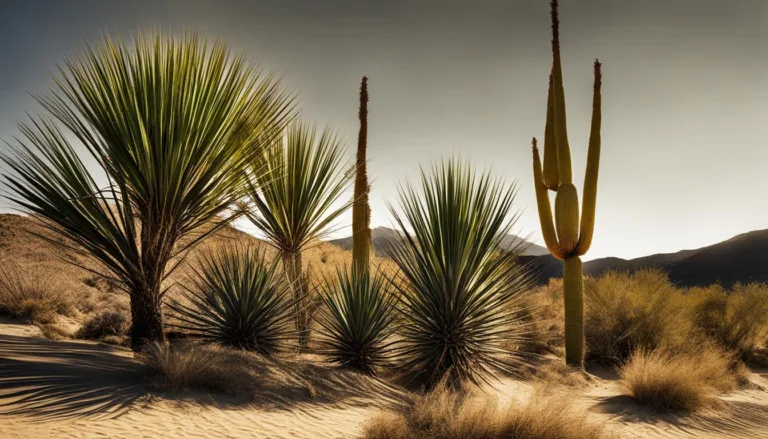
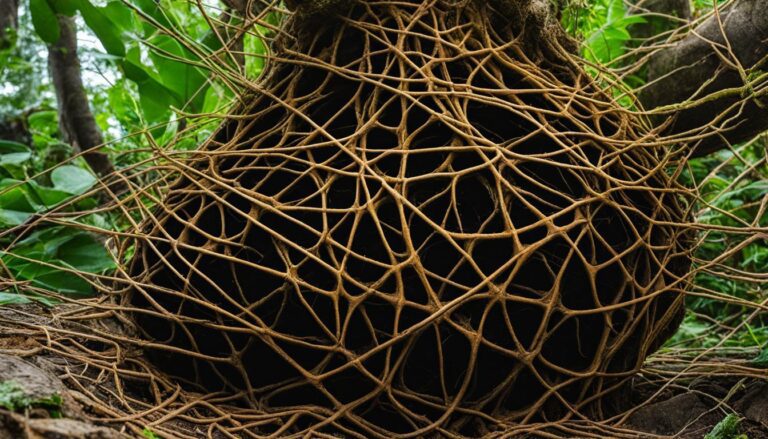
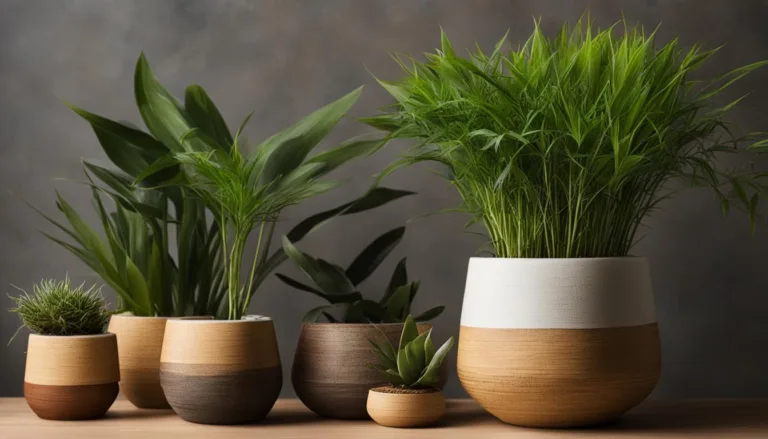
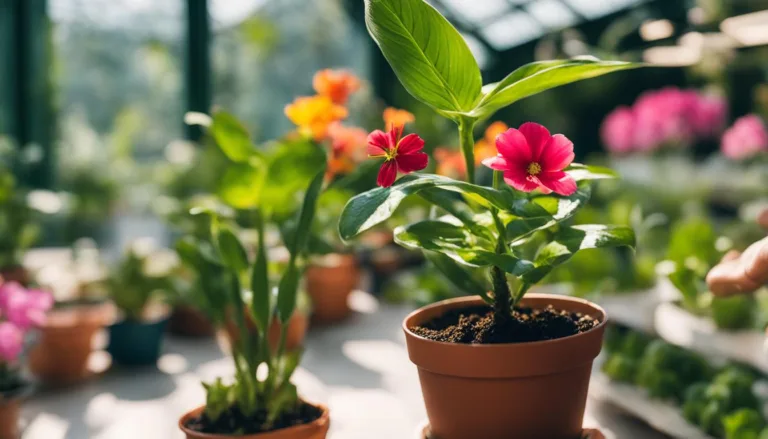
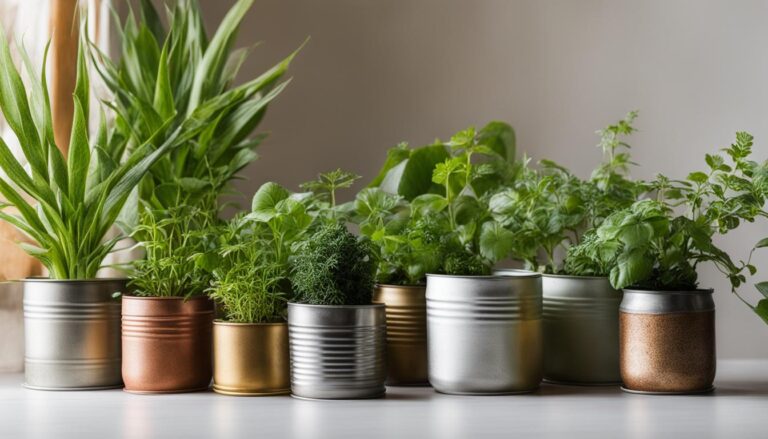
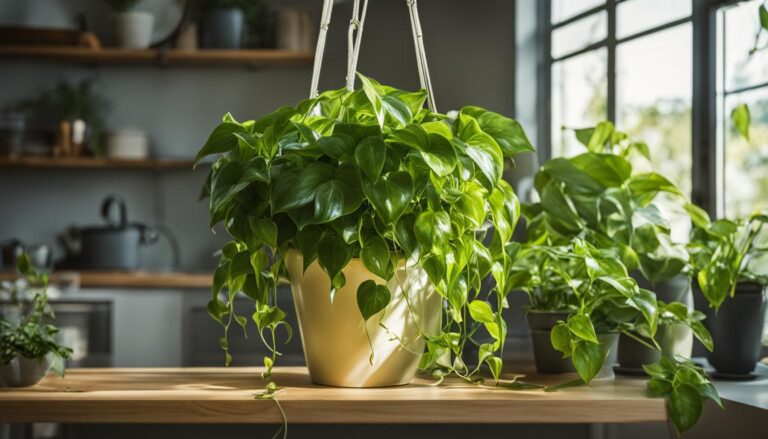
3 Comments